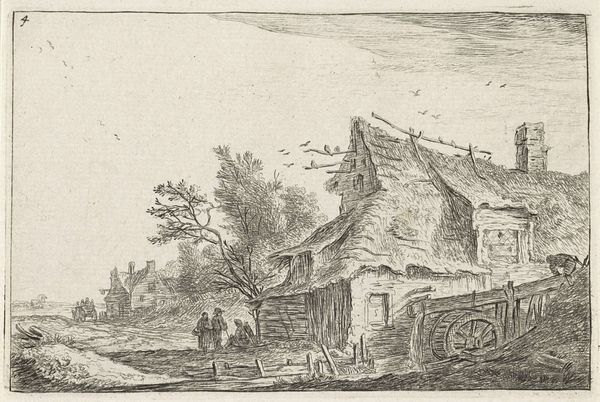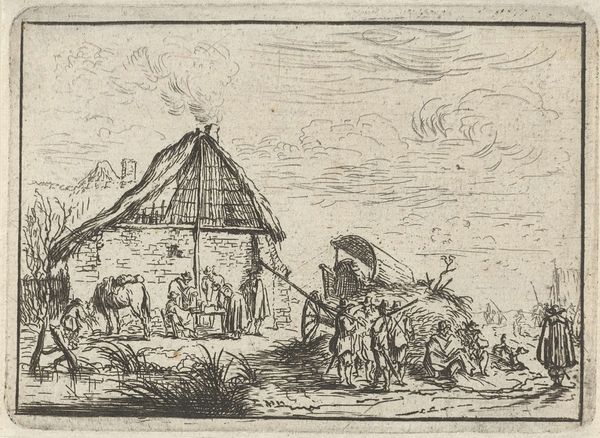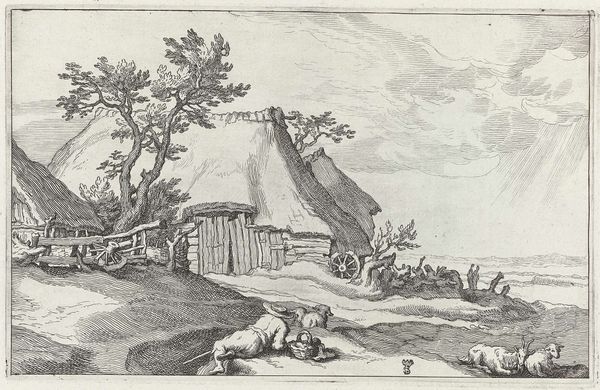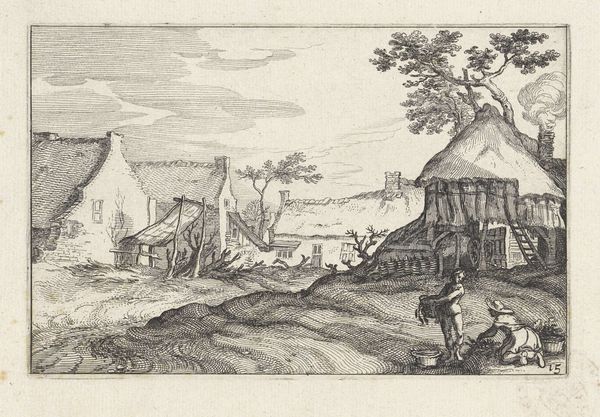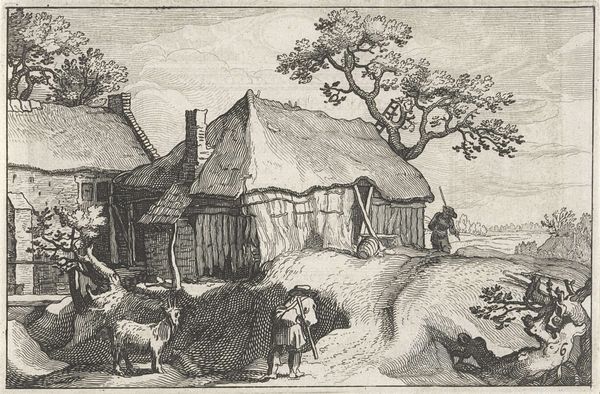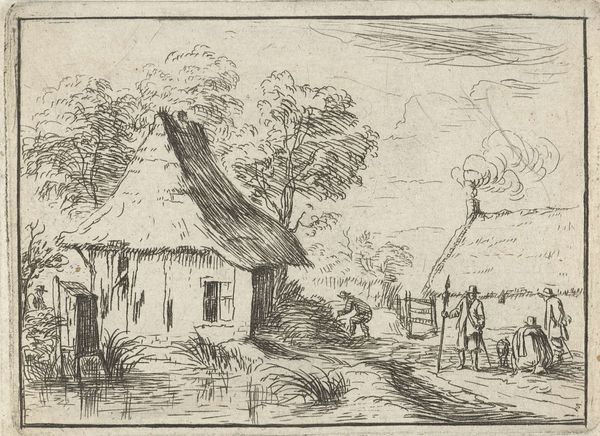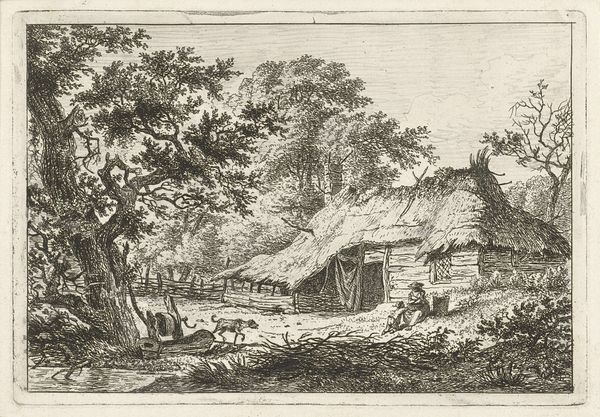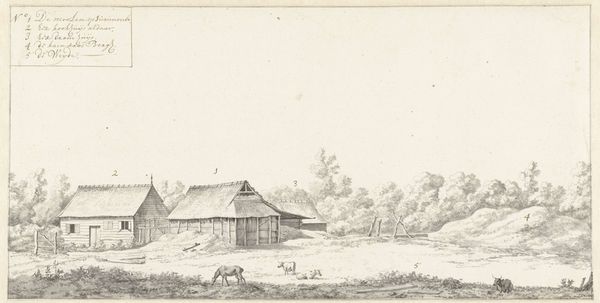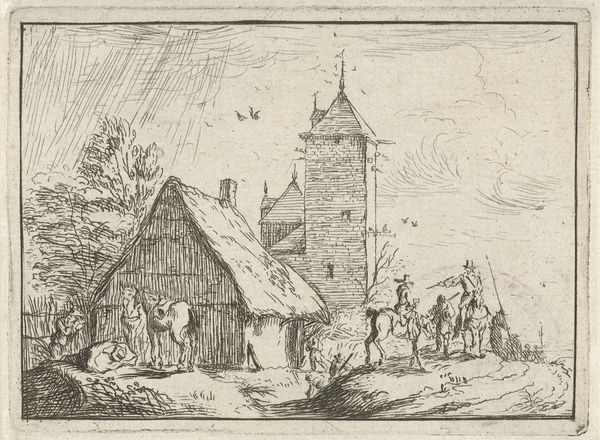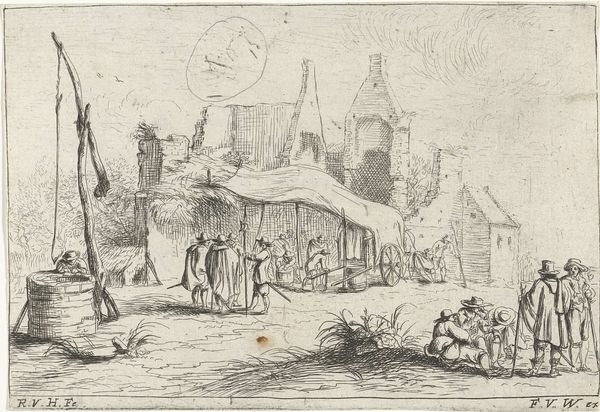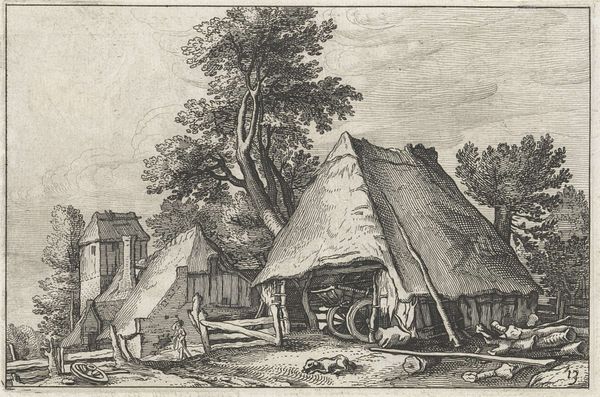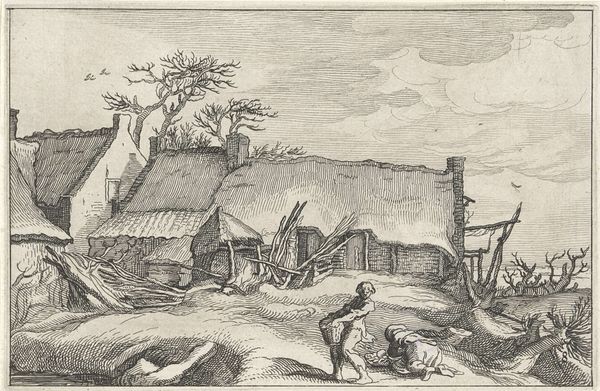
print, etching
#
baroque
#
dutch-golden-age
# print
#
etching
#
landscape
#
figuration
#
genre-painting
Dimensions: height 66 mm, width 93 mm
Copyright: Rijks Museum: Open Domain
Curator: Today we’re looking at "Kampement bij een dorp" by Robert van den Hoecke. The etching, dating from somewhere between 1632 and 1668, is currently held here at the Rijksmuseum. Editor: Okay, first impression? A sketch caught in a half-dream, all spindly lines and scratchy shadows. It feels like looking at a memory through a dusty attic window, slightly melancholy, don’t you think? Curator: I appreciate your attention to the graphic elements. Consider how the stark contrast of the etching medium renders the composition, structuring depth primarily through linear perspective and skillful hatching. The interplay between light and shadow suggests an interest in the everyday lived experience. Editor: Absolutely, I see the technical skill, all those meticulously placed lines. But beyond that, it gives off such an unguarded vibe. Van den Hoecke really just drops you into this rustic encampment and lets you wander. The scene almost teeters into the ridiculous. Curator: Let us focus on the figuration. It's key to observe the rendering of these characters as archetypes representative of their social role. Note the precise detailing of the officer on horseback contrasted against the rustic villagers; a microcosm reflecting broader 17th century Dutch social strata. Editor: Yes, but aren't they so *alive* too? Look at those huddled figures in the foreground, chatting away like gossiping birds, while the fancy officer struts by, probably judging their dodgy haircuts! It's that human touch that pulls me in every time. And that dog scratching himself – the casual inclusion of such mundane details feels revolutionary somehow. Curator: Such details indeed exemplify the artistic tenets of Dutch Golden Age landscape tradition. We may note van den Hoecke's formal employment, at points, as a military engineer to better consider how observation and the artifice of composition interpenetrate each other. Editor: Right, and you see all of that in the way he renders those scraggly trees? It feels less like a statement, more like eavesdropping on a little slice of 17th-century life. Maybe the true artistry isn't just the etching, but also in the little world, he conjures within it. Curator: An insightful observation. Van den Hoecke presents here not simply a depiction, but indeed an invitation to consider societal contrasts and individual narrative. Thank you for helping articulate a more well-rounded point of access.
Comments
No comments
Be the first to comment and join the conversation on the ultimate creative platform.
